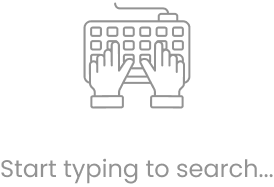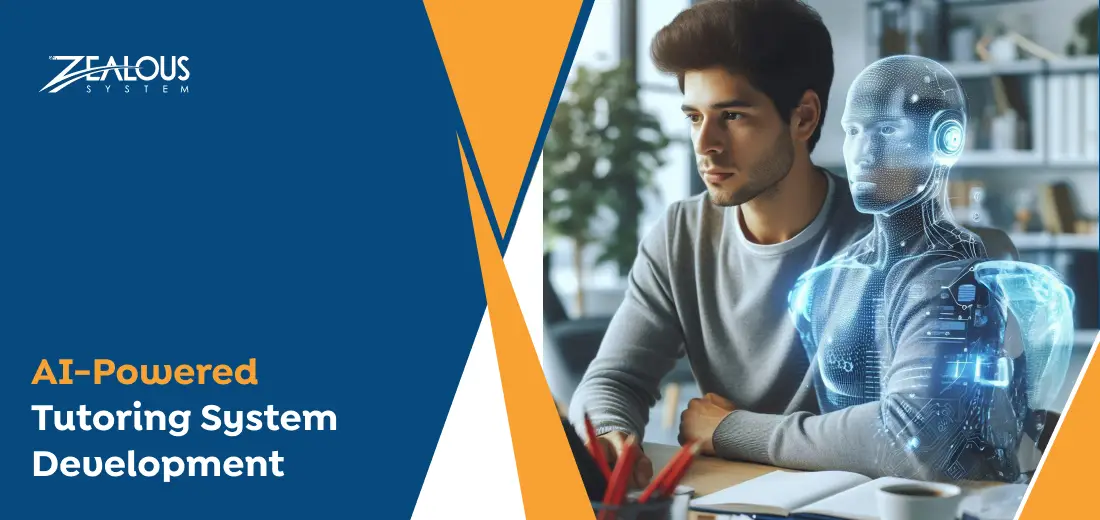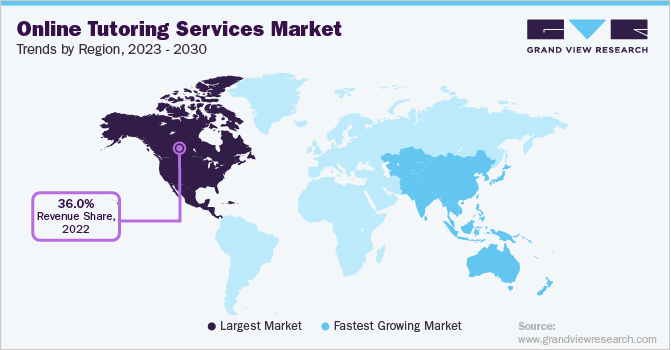


Every student has likely wished for a teacher who is available 24/7, helps with revision anytime, stays patient, and teaches in a way they understand. In the past, this seemed impossible because teachers were only available during school hours. If students had questions while studying at night, there was no one to help. But now, with AI, this is possible. AI-powered tutoring systems have transformed traditional teaching methods, offering more interactive, engaging, and effective learning experiences.
Education is changing rapidly as artificial intelligence enters classrooms, creating smarter and more personalized learning. Imagine having a tutor who understands your strengths and weaknesses, identifies them instantly, and adjusts lessons to match your pace and style in real time.
Whether it’s mastering complex topics or grasping basic concepts, an AI tutor ensures no student is left behind. AI makes true personalization in education possible, tailoring the learning journey to each student’s unique needs.
AI in education opens up new opportunities for schools, colleges, students, and teachers. AI-powered tutoring systems are one of the most significant advancements AI brings to the education industry.
This guide will walk you through everything you need to know about developing an AI-powered tutoring system. We’ll cover the basics, key technologies, and the steps to build the system. You’ll also learn about the benefits, challenges, and best practices for creating a system that is effective, scalable, and secure.

Source: grandviewresearch
An AI-powered tutor system is a smart virtual assistant designed to act like a human teacher. It provides one-on-one lessons and adjusts its teaching based on each student’s learning pace, style, and needs. This system offers timely support, gives instant feedback, tracks progress, and focuses on areas where students need extra help. This makes learning more effective and engaging. The best part is that these AI tutors are available 24/7.
AI-powered tutoring systems have made a big difference in education. Studies show they can improve student performance by 30% and increase retention rates by 25% compared to traditional teaching methods. With global spending on education technology expected to reach $404 billion by 2025, AI-powered tutors are quickly becoming essential in modern education.
AI-powered tutoring systems are reshaping education by offering personalized learning, supporting teachers, and improving efficiency for schools and colleges. These smart systems use machine learning and data analytics to tailor lessons, identify learning gaps, and handle routine tasks. They benefit students, teachers, and institutions alike.
Personalized Learning
AI tutors adapt to each student’s learning style and pace. They provide customized lessons and feedback, helping students understand and remember concepts better.
24/7 Availability
Students can access AI tutors anytime, enabling continuous learning outside school hours and keeping them on track with their studies.
Instant Feedback
AI tutors quickly answer student questions and provide feedback. This speeds up learning and allows students to practice and strengthen their understanding without waiting for teacher input.
Time-Saving
AI tutors handle routine tasks like grading and administration. This frees up teachers to focus on planning lessons and connecting with students.
Data Insights
AI tracks student performance and learning patterns. These insights help teachers adjust their methods and improve student outcomes.
Support for Diverse Learners
AI tutors assist with various learning needs, enabling teachers to provide extra attention and resources to students who need them.
Scalability
AI tutors can manage large numbers of students without compromising quality, allowing schools and colleges to expand their programs.
Cost Efficiency
By automating administrative tasks and enhancing learning, AI tutors help institutions reduce costs and use resources more effectively.
Improved Academic Quality
AI tutors support students at all levels, leading to better academic performance, lower dropout rates, and higher overall educational standards.

Given below are the features that help the AI-powered tutoring systems to improve education by delivering intelligent and adaptive learning experiences:
Every student learns in their own way. So, when creating your AI tutoring software, focus on identifying each student’s strengths and weaknesses. Then, tailor lessons to match their learning style and pace. This keeps students interested and helps them gain the most from the material.
Boring content won’t work! Make your AI-powered software futuristic by adding quizzes, games, and simulations that adapt to each student’s performance. By adjusting the difficulty and showing relevant content, you can create a more engaging and effective learning experience.
Live sessions are a popular feature of AI-powered tutoring software. These sessions add a personal touch to digital learning by allowing students to interact with teachers in real time. AI tools analyze these interactions and customize the lessons to make them more effective. By including live sessions, your AI tutoring software can stand out from traditional tutoring platforms.
Instant feedback is an essential feature of AI-powered tutoring systems for effective learning. The AI tutoring software should automatically grade tests and assignments while providing immediate feedback. This allows students to fix their mistakes quickly and monitor their progress.
The platform should support multiple languages to connect with learners worldwide. Translating lessons and adapting to various cultures ensures the AI tutoring software is accessible to a global audience.
The AI-powered tutoring software should smoothly integrate with Learning Management Systems (LMS) and other educational tools. This allows schools and teachers to use the platform without changing their existing setup. The easier the process, the faster schools will adopt the software.
AI-powered tutoring software suggests content based on what students need next. It keeps learners motivated by recommending materials that match their progress and interests, helping them make the most of their study session.
Teachers can make use of AI-powered insights. Your AI tutoring software should generate reports on students’ progress, areas where they need help, and overall learning trends. This helps teachers provide better support and gives them ideas to adjust their teaching strategies.
To make your AI-powered tutoring software future-proof, focus on scalability and flexibility. Ensure it can handle more users, cover a variety of subjects, and easily integrate new technologies as they emerge. Additionally, keep it adaptable so it can stay up-to-date with changing educational trends and be quickly customized when needed.
If you’re ready to develop AI-powered tutoring software, you’re in for an exciting journey! Here’s a simple guide to get you started:
Before developing an AI-based tutoring system, it’s important to set clear goals and understand who the system is for. Are you targeting K-12 students, college learners, or professionals? What specific learning outcomes do you want the system to help achieve?
Selecting the right technology stack is essential for building a robust AI-powered tutoring system. Your choice will depend on the specific needs of your project, such as the type of AI algorithms, database requirements, and user interface design.
The core of the tutoring system is its AI models. These models should be created to:
A simple and engaging UI/UX is key to the success of any tutoring system. The design should be easy to use, with smooth navigation, clear instructions, and a visually pleasing layout. Adding interactive features like quizzes, videos, and gamification can boost engagement in your AI-powered tutoring software.
To provide a smooth experience, the AI-powered tutoring system should be integrated with existing LMS platforms. This allows educators to manage course content, track student progress, and access data analytics within a single platform.
Before launching the AI-powered tutoring system, make sure to test the software carefully. Test it with real users to find any issues and gather their feedback. Use this feedback to improve the system, making sure it works well for both students and educators.
Once the AI-powered tutoring system is ready, start with a small test program and invite a limited number of users. Monitor its performance, collect feedback, and make improvements before rolling it out to a wider audience.
Developing an AI-powered tutoring system comes with several challenges. Here are some common ones:
For the AI to function well, it needs a lot of quality data. Collecting this data can be difficult, and poor data can lead to incorrect results or misunderstandings.
Every student learns differently. Creating an AI system that can adapt to individual learning styles and needs is complex and requires advanced programming and data analysis.
AI needs to accurately understand what each student is struggling with. This can be tricky, especially when the AI doesn’t have the same emotional understanding as a human teacher.
Many schools and educational platforms already use other software. Making sure the AI tutoring system works well with these existing tools can be challenging.
Since the AI system will handle student data, it’s important to protect this information from breaches and ensure it’s used responsibly.
AI systems need to be updated and improved regularly to stay effective. This requires ongoing development and testing.
Some teachers may be hesitant to use AI in the classroom. Gaining their trust and showing the system’s value is essential for its success.
To ensure the success of your AI-powered tutoring software, consider these best practices:
Software undergoes a constant state of change, driven by new ideas and technological progress. To stay ahead, it’s important to track and implement trends that support your business objectives. Here are some key trends to explore:
Machine learning is the backbone of AI-powered tutoring systems. If you plan to develop a futuristic AI Tutoring System, then watch out for new algorithms that can make learning even more personalized. These upgrades help your software adjust to each student’s unique needs, making teaching more effective and tailored.
This trend is not just a buzzword, but a gem of AI. NLP is what lets your software understand and talk back to users naturally. It’s essential for building conversational interfaces, like chatbots, that interact with students in a way that feels natural and engaging. This makes your AI-powered tutoring system more interactive and user-friendly.
Classes and tests without analysis are fruitless. Therefore, real-time analytics are a game-changer when you are looking to track student progress and adjust lessons on the spot. You can use or incorporate Internet of Things (IoT) devices later to gather data from interactive tools and wearables. This data will help your AI tutoring software adapt content instantly and provide immediate feedback, making learning more responsive and up-to-date.
Adaptive learning tech is a trend that lets your AI-powered tutoring software customize lessons based on each student’s performance. This means your system can offer lessons and resources customized to individual needs, helping students learn at their own pace and stay engaged.
When it comes to developing cutting-edge AI-powered tutoring systems, Zealous System stands out as a leading partner in educational software development services. Our expertise in AI and machine learning, combined with a deep understanding of educational needs, positions us uniquely to deliver innovative, high-quality solutions.
At Zealous System, we leverage advanced AI and machine learning technologies to build robust and intelligent tutoring systems. Our team consists of skilled data scientists, AI experts, and software developers who specialize in creating models that adapt to individual learning styles. With a proven track record of implementing sophisticated AI algorithms, we ensure that your tutoring system provides personalized, adaptive, and effective learning experiences.
Choosing Zealous System for your AI-powered tutoring system development means partnering with a team dedicated to innovation, quality, and excellence. Our expertise, customized solutions, and commitment to client satisfaction ensure that your educational technology project will be a resounding success.
Our team is always eager to know what you are looking for. Drop them a Hi!
Comments